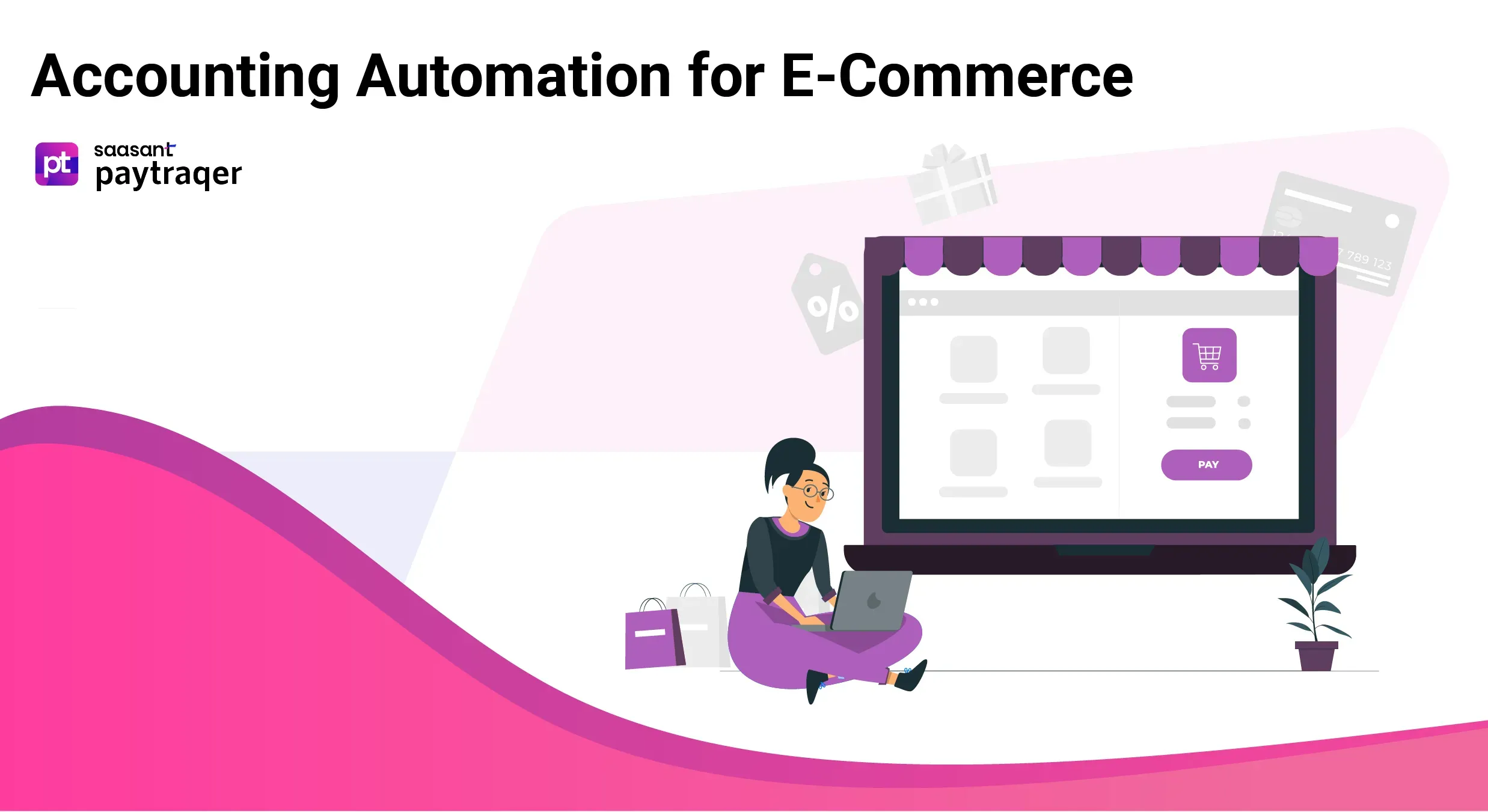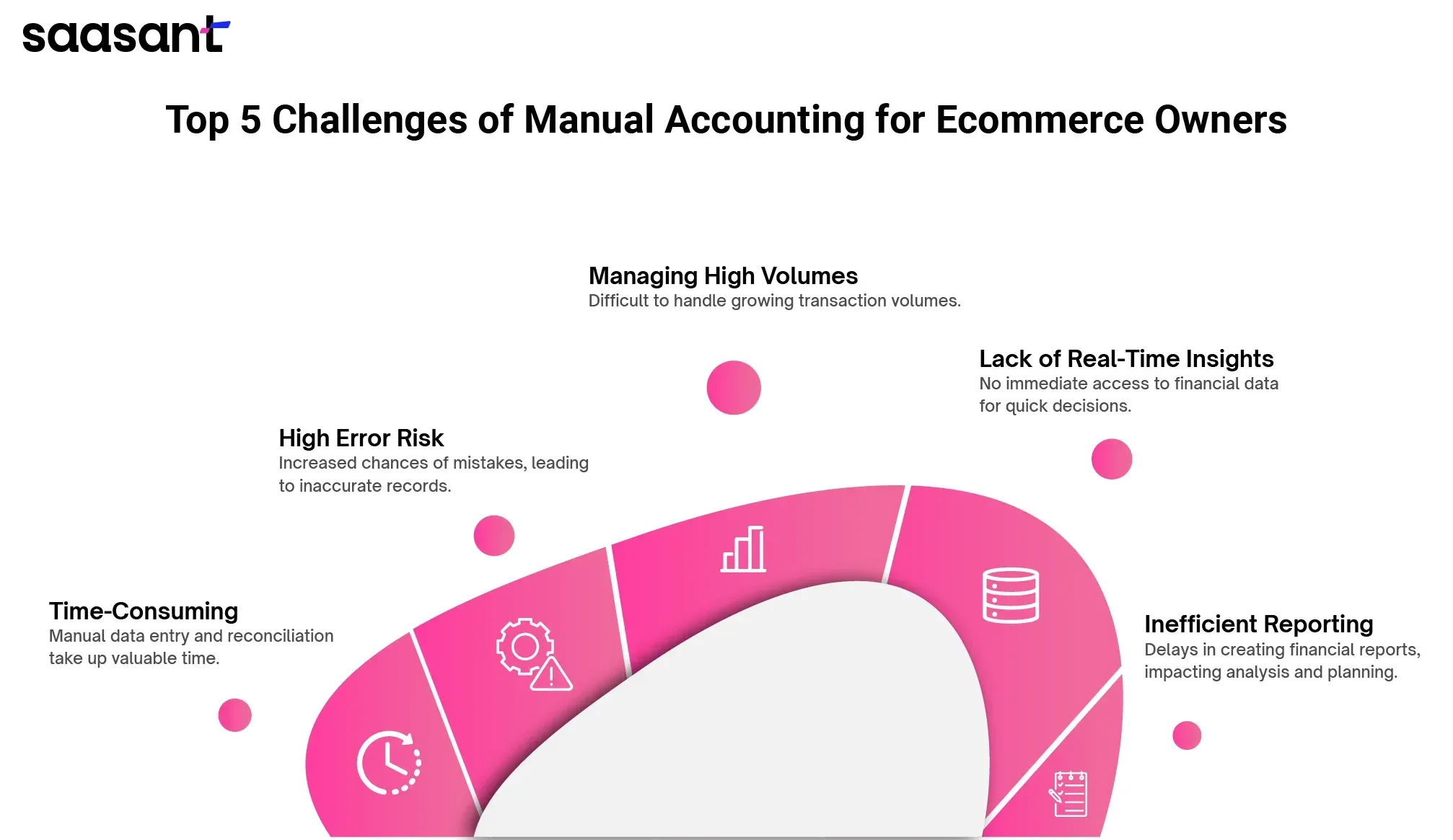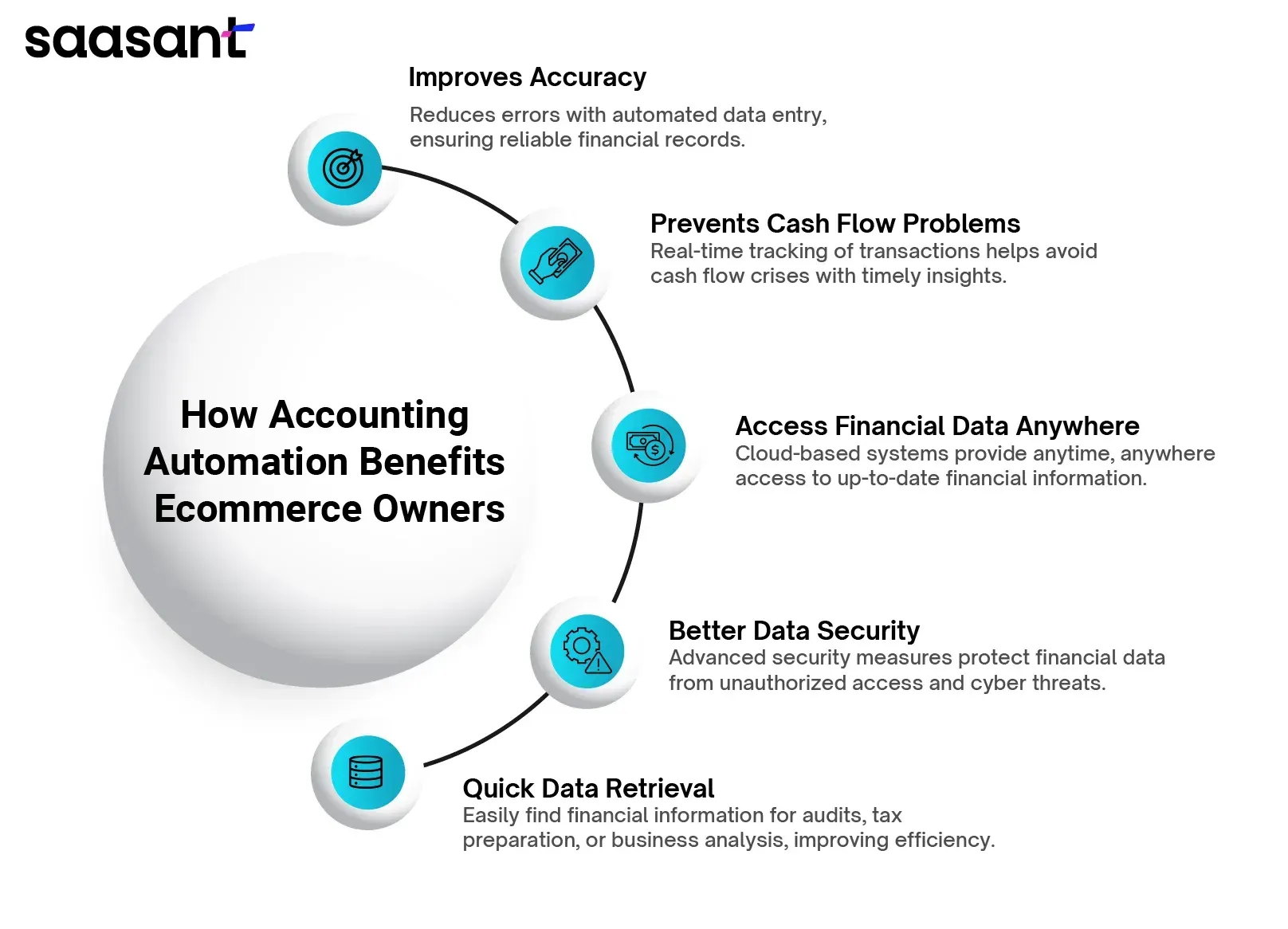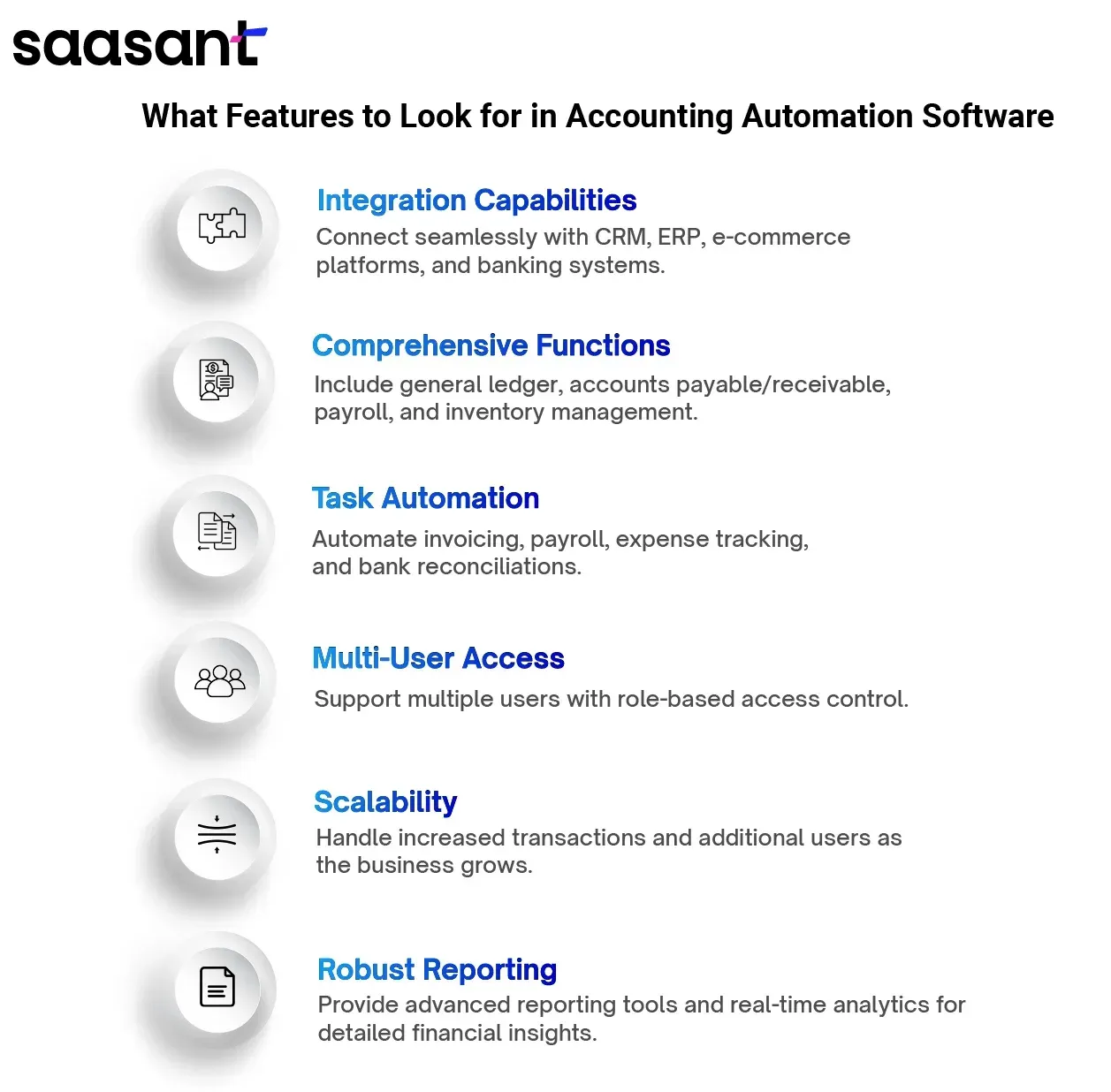Accounting Automation for E-commerce Owners: A Complete Guide
 Introduction
Introduction
As an e-commerce owner, you may constantly juggle multiple tasks, from managing your inventory to fulfilling orders and providing exceptional customer service. Let’s not forget that accounting is one of the most critical business aspects. Keeping track of your finances is crucial for the success and growth of your business, but it can also be a time-consuming and tedious task.
Fortunately, with the rise of technology, accounting automation has become an increasingly popular solution for e-commerce owners. In this article, we’ll explore the benefits of accounting process automation and how it can help you streamline financial operations, save time, and, ultimately, boost your bottom line.
Contents
Introduction
What Is Accounting Automation?
Top 5 Challenges of Ecommerce Owners with Manual Accounting
How Accounting Automation Can Help Ecommerce Owners
How Does Accounting Automation Work?
What Are the Tasks Performed by Accounting Automation Software?
7 Steps to Automate Your Accounting Processes
What Features to Look for in Accounting Automation Software?
Wrapping Up
FAQ
What Is Accounting Automation?
Accounting automation uses software and tools to streamline and automate financial management tasks, such as bookkeeping, invoicing, tax preparation, etc. United States accounting services statistics show that software can automate almost 75% of accounting tasks.
This trend aligns with the projection that by 2026, the global market for accounting software will be valued at close to $12 billion, growing at an expansion rate of 8.6% every year. Automation in accounting has become increasingly popular in recent years as more businesses turn to technology to simplify their financial processes and save time.
Top 5 Challenges of Ecommerce Owners with Manual Accounting

1. Time-Consuming Processes:
Manual accounting involves repetitive data entry, reconciliation, and calculations, consuming significant time that could be better spent on core business activities. You might need an accountant, and this is where e-commerce accounting automation comes in to streamline these processes and save valuable time.
2. High Risk of Errors:
Manual entry and calculations increase the likelihood of human errors, leading to inaccurate financial records, potential compliance issues, and financial discrepancies.
3. Difficulty in Managing High Volumes of Transactions:
As eCommerce businesses scale, the volume of transactions grows, making it increasingly challenging to manually manage and track sales, expenses, and inventory.
4. Lack of Real-Time Financial Insights:
Manual accounting must provide real-time financial data, which can hinder the ability to make informed decisions and react promptly to market changes.
5. Inefficient Financial Reporting:
Generating accurate and timely financial reports manually is cumbersome, delaying critical financial analysis and strategic planning. This inefficiency can impact decision-making and overall business growth.
How Accounting Automation Can Help Ecommerce Owners
Here are a few benefits of accounting automation for eCommerce owners.

Improves Accuracy
Manual accounting processes are susceptible to misinterpretations, leading to financial misstatements, inappropriate tax returns, and penalties. Automation in accounting mitigates the risk of errors by automating the data entry and bookkeeping processes. Automated software ensures that financial records are accurate and up-to-date, allowing business owners to make informed decisions based on reliable financial data.
Prevents Cash Flow Problems
Accounting automation tracks transactions and balances in real-time, ensuring that eCommerce owners always have a clear picture of their cash flow status. This proactive approach helps avoid potential cash flow crises by providing timely insights and alerts.
Access Financial Data from Anywhere
With cloud-based accounting automation, eCommerce owners can access their financial data anytime. This flexibility is especially beneficial for businesses operating remotely or with multiple locations. Cloud access ensures that financial information is always up-to-date and easily accessible.
Better Data Security
Security is a top priority for financial data. Automated accounting systems incorporate advanced security measures, such as encryption and access controls, to protect sensitive information. This ensures that financial data is secure from unauthorized access and cyber threats.
Quick Data Retrieval
Automated systems enable quick and easy retrieval of financial data. ECommerce owners can find the necessary information for auditing purposes, tax preparation, or business analysis without sifting through paperwork. This efficiency improves overall business operations.
Enhanced Accuracy and Compliance
Automation tools enhance the accuracy of financial data by eliminating manual entry errors. This precision is crucial for maintaining compliance with tax regulations and financial reporting standards. Automated systems ensure that all transactions are recorded correctly and necessary reports are generated accurately, reducing the risk of audits and penalties.
Real-Time Financial Insights
Automated systems provide up-to-date financial statements, cash flow reports, and profit and loss summaries. These insights help eCommerce owners make informed decisions, monitor business performance, and identify trends that can influence strategic planning.
Easy scalability
E-commerce businesses are often subject to sudden spikes in sales, particularly during peak seasons. Manual accounting processes may need help to keep up with the increased volume of transactions. Accounting automation is scalable, and the software can handle many transactions without compromising accuracy or efficiency. This makes it easier for e-commerce owners to grow without worrying about financial management.
How Does Accounting Automation Work?
At its core, accounting automation software seamlessly handles financial transactions by storing and processing data like invoices, bills, COGS, and payments to generate comprehensive reports. It can be deployed as an installed application or accessed via cloud-based services, ensuring data accessibility from any location with an internet connection. The workflow typically includes the following key stages:
Data Integration: Syncs with bank accounts, credit cards, and financial platforms to retrieve transaction data. Leveraging software like QuickBooks or Xero, coupled with SaasAnt Transactions, allows for effortless import and precise financial data management. To ensure swift and accurate tracking of payments, use a robust payment integration application like PayTraQer.
Data Entry: Uses OCR and machine learning to populate fields accurately, reducing manual errors.
Reconciliation: Matches transactions with bank statements, ensuring consistency.
Reporting: Generates financial reports like income statements and balance sheets for informed decision-making.
Workflow Automation: Automates tasks such as invoicing and payment reminders to save time.
What Are the Tasks Performed by Accounting Automation Software?
Effective automated accounting software enables eCommerce owners to manage their financial operations efficiently. It automates manual tasks, ensuring accuracy, compliance, and seamless integration with multiple business processes. Below are some eCommerce accounting tasks that accounting software can perform and examples.
Automated Bookkeeping
Automatically imports and categorizes transactions, reducing manual data entry.
Example: E-commerce business owners use automated accounting software to import their bank statements automatically. The software categorizes transactions, saving the business owner hours of manual data entry each week.
Automated Invoicing
Generates and sends invoices to customers, minimizing errors.
Example: An e-commerce business owner uses accounting automation software to automatically generate invoices for each website sale. The software sends the invoices to customers via email, mitigating the need for manual follow-up.
Payment Processing
Integrates with payment processors for accurate records with your sales channels.
Example: A small business owner uses accounting automation software to record payments automatically and update the accounting records in real time. You can also integrate PayTraQer to help keep track of payments since it easily integrates your payment application into your e-commerce platform.
Financial Reporting
Creates reports to provide insights into business performance.
Example: An e-commerce owner uses accounting automation systems to generate financial reports. This software provides insights into sales data, revenue, and profitability, helping the owner make data-driven decisions about their business.
Payroll
Calculates wages and issues paychecks, ensuring timely payments.
Example: A medium-sized e-commerce business owner uses eCommerce accounting automation software to handle payroll. The software calculates wages, deducts taxes, and issues paychecks, ensuring employees are paid accurately and on time.
7 Steps to Automate Your Accounting Processes
Implementing accounting automated processes in eCommerce improves efficiency and accuracy in financial reporting. Here is a step-by-step guide to automated accounting.
Step 1: Identify Routine Tasks
List repetitive and time-consuming accounting tasks like data entry, invoice processing, and audit documentation.
Step 2: Choose the Right Accounting Automation Software
Select suitable eCommerce accounting automation software with features like integration capabilities, scalability, and support for accounts payable automation and procurement.
Step 3: Data Migration and Integration
Accurately migrate existing data and integrate the software with other business systems (CRM, ERP, e-commerce) for seamless data flow.
Step 4: Customize and Automate Workflows
Customize workflows to fit your business processes and set up automation rules for invoice generation, accounts payable, procurement, and transaction matching tasks.
Step 5: Train Your Team
Provide comprehensive training to ensure your team is comfortable using the new software and automated workflows.
Step 6: Monitor and Optimize
Continuously monitor automated processes, gather feedback, and adjust for optimal efficiency.
Step 7: Regular Updates and Performance Evaluation
To ensure effectiveness, keep the software updated, perform regular maintenance, and periodically review performance metrics like time saved, error reduction, and audit readiness.
What Features to Look for in Accounting Automation Software?

Integration Capabilities:
Seamless integration with other essential business tools, such as CRM, ERP, e-commerce platforms, and banking systems. Integration with PayTraQer automates and simplifies the process of syncing transactions from various e-commerce platforms and payment gateways directly into QuickBooks and Xero, ensuring accurate and timely financial records.
Comprehensive Accounting Functions:
Comprehensive core accounting modules, including general ledger, accounts payable, accounts receivable, payroll, and inventory management, to handle all fundamental accounting tasks.
Automation of Routine Tasks:
Features that automate repetitive accounting tasks like invoicing, payroll, expense tracking, and bank reconciliations to save time and reduce errors. Integration with SaasAnt Transactions helps automate repetitive manual tasks and simplify the process of importing and exporting financial data to QuickBooks and Xero.
Multi-User Access:
Multiple users can be supported with role-based access control, allowing different team members to access and work on the system simultaneously with appropriate permissions.
Scalability
Scalability to accommodate business growth, ensuring that the software can handle increasing transaction volumes and additional users as the company expands.
Robust Reporting and Analytics
Advanced reporting tools and analytics capabilities that provide detailed financial insights, customizable reports, and real-time data to support informed decision-making.
Wrapping Up
Automation in the accounting industry is a game-changer for eCommerce businesses. It offers significant time savings, improved accuracy, and enhanced financial insights. Accounting software streamlines financial management processes by automating routine tasks, integrating with essential business tools, and providing real-time data access.
Embracing these technologies allows eCommerce owners to focus on growing their businesses and delivering exceptional customer experiences, ultimately driving success and profitability. Investing in the proper accounting automation application is convenient and a strategic move toward a more efficient and scalable business operation.
FAQ
What is automation in accounting?
Automation in accounting involves using software to perform repetitive tasks like data entry, invoicing, and reconciliations, reducing manual effort and errors.
How do I automate my accounting job?
Automate your accounting job using accounting software that integrates with your business tools, streamlines processes, and automates payroll, expense tracking, and financial reporting tasks.
Will accounting ever be fully automated?
While many accounting tasks can be automated, full automation is unlikely due to the need for human judgment, strategic decision-making, and complex problem-solving.
Is QuickBooks an automated accounting system?
Yes, QuickBooks is an automated accounting system that simplifies financial management by automating tasks like invoicing, expense tracking, and financial reporting.
How do you maintain eCommerce accounting?
Maintain eCommerce accounting using specialized software to track sales data, expenses, and inventory. Regularly reconcile transactions, automate routine tasks, and generate detailed financial reports for accurate and efficient financial management.